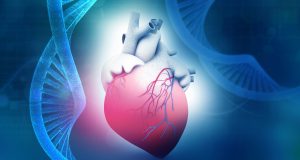While the risk factors for cardiovascular disease (CVD) may be commonly known, what may be less known is that, in some people, the skin may change when there’s an issue with heart health.

While these skin changes may not be “exclusive to heart disease”, as Brisbane-based pharmacist turned consultant dermatologist Dr Melissa Manahan says, in some instances they may indicate an issue with heart health, warranting further investigation.
“There are many skin changes that can be associated with heart disease but are not exclusively due to heart disease,” says Dr Manahan.
“Therefore, these patients should be referred to their GP for further evaluation.”
Skin issues
Dr Manahan lists some examples of heart-related conditions that may show indications on someone’s skin.
“For example, an unwell, febrile child who has very dry, bleeding, cracked lips could have Kawasaki disease, which is associated with heart disease and requires emergency evaluation,” she says.
“Signs of infective endocarditis include painful lumps on fingers and toes (Osler nodes), painless red/brown lesions on soles and palms (Janeway lesions) and splinter haemorrhages (red lines under the nails, which are not due to trauma).
“Leg oedema – swelling of the lower limbs – may be a sign of fluid overload that can be due to heart failure.
“Yellow, waxy lesions on the skin, especially near the eye (xanthelasma) or elsewhere on the skin (xanthomas), can be related to elevated cholesterol. These can be particularly concerning if the lesions appear suddenly (eruptive xanthoma).
“Rheumatic heart disease (due to a strep A infection) can start with a skin infection or throat infection, fever, subcutaneous nodule and a painless rash with distinctive ring-like features (erythema marginatum).
“Some studies have shown that there’s a higher prevalence of cardiovascular disease in patients with moderate-severe psoriasis.”
Dr Manahan points out that some skin changes due to heart disease, such as leg oedema, are “very common in the community”, but “other skin changes, such as those related to rheumatic fever or Kawasaki or infective endocarditis, may be rarer, as these conditions are less common”.
The mechanism behind the skin changes
“The mechanism of skin changes varies depending on which part of the cardiovascular system is involved,” says Dr Manahan.
“For example, waxy lesions may appear as cholesterol deposits and leg oedema due to fluid overload from the heart being less effective in pumping.
“Skin changes related to infective endocarditis may be related to bacteria that are blocking the blood vessels at these sites.”
Treatment options
Dr Manahan says treatment for any skin changes that might be happening is “usually based on managing the underlying condition but depends on which skin change it is”.
Regardless of the treatment options, she reiterates that if someone notices these skin or nail changes, it’s important that they’re directed to see a healthcare professional “as soon as possible, especially if the changes are acute, painful, or if the patient feels unwell and has a fever, shortness of breath or chest pain”.
To read the full feature as it appears in the April issue of Retail Pharmacy Assistants magazine, visit: rpassistants.com.au/magazines/retail-pharmacy-assistants-april-2021/







